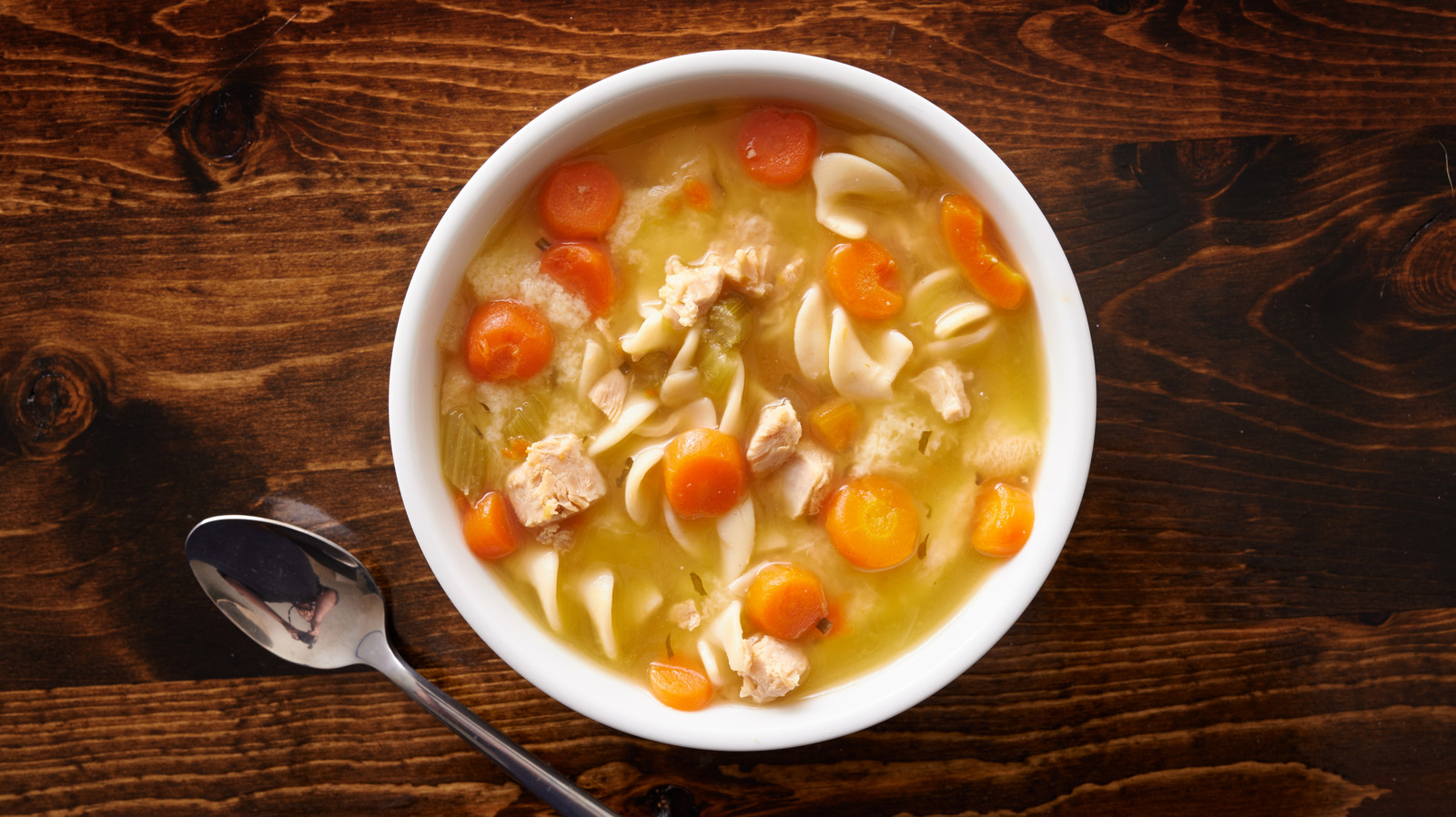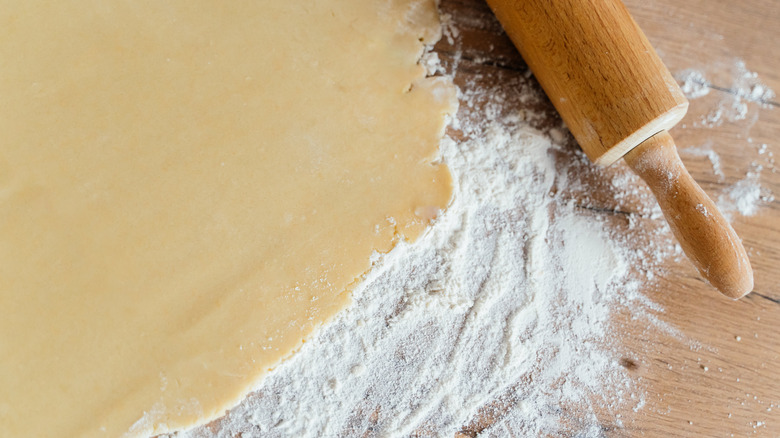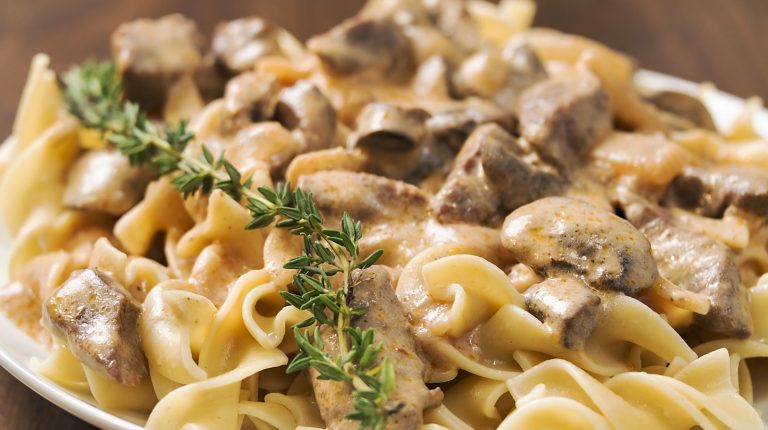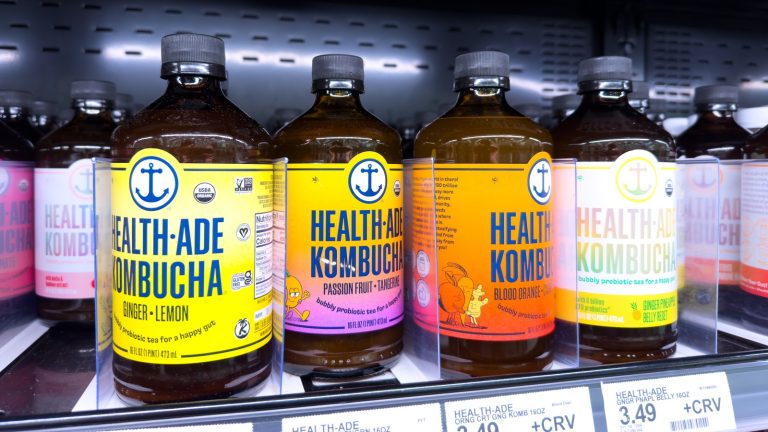Anyone who has made noodles at home, or has simply read about the process, understands it’s a labor of love. After all, it can be a tedious process, especially for beginners, and fresh noodles only last about 24 hours before they begin to spoil. Although you can freeze and preserve your homemade noodles, you may wonder why canned soup has such a long shelf life. Moreover, how the noodles don’t turn to mush after marinating in a can.
Homemade noodles use eggs and are mixed together with flour to form into a dough that is then kneaded and rolled into thin sheets before being cut into the desired shape. A key difference between canned and homemade is the type of flour used. In canned soup, it’s most likely durum flour due to its high amounts of protein (15%) and gluten that make for a hardy-firm noodle — right below whole wheat in terms of the flour with the highest protein.
In contrast, homemade noodles often call for 00 flour for a smooth, chewy texture. Although 00 flour is commonly used in homemade noodle recipes, it falls into the low protein category, carrying only 8% to 12%. Additionally, the “00” refers to the fineness of the grind rather than the type of grain, which this one is rated as extremely fine. Essentially, gluten is what prevents the noodles from dissolving in liquid. Glutenin and gliadin, the two proteins that form together to make gluten, are what make up that water resistance property.
How gluten is formed and why it makes noodles insoluble
The short answer is that the unique molecular structure, along with the interactions that occur between the glutenin and gliadin proteins, make noodles insoluble in both salt solutions and water. A more complete answer is that gluten is a by-product of wheat starch production, similar to how some cheeses are processed. When mixed and washed with water, gluten begins to show as a sticky, rubber-like mass. After the rubbery mass is dried at temperatures around 131 degrees Fahrenheit, it turns into a powdery substance called vital gluten.
Vital gluten mostly consists of proteins, lipids, and carbohydrates, and when vital gluten is rehydrated with water, it returns to its rubbery form. While the glidin protein is insoluble to water and salt, the glutenins protein provides large protein polymers, linked proteins, that form a densely interconnected protein network. When glidin and glutenins combine to create gluten, the dense network makes it quite difficult for water to break the protein network apart.
If you wanted to break gluten down, you would need either alcohol, heat above 140 degrees Fahrenheit, or use a reducing agent, which can be something with vitamin C. When making homemade noodles, experiment with different flour combinations, whether you prefer a nice chewy texture with 00 flour or a hardier noodle with durum wheat flour.






